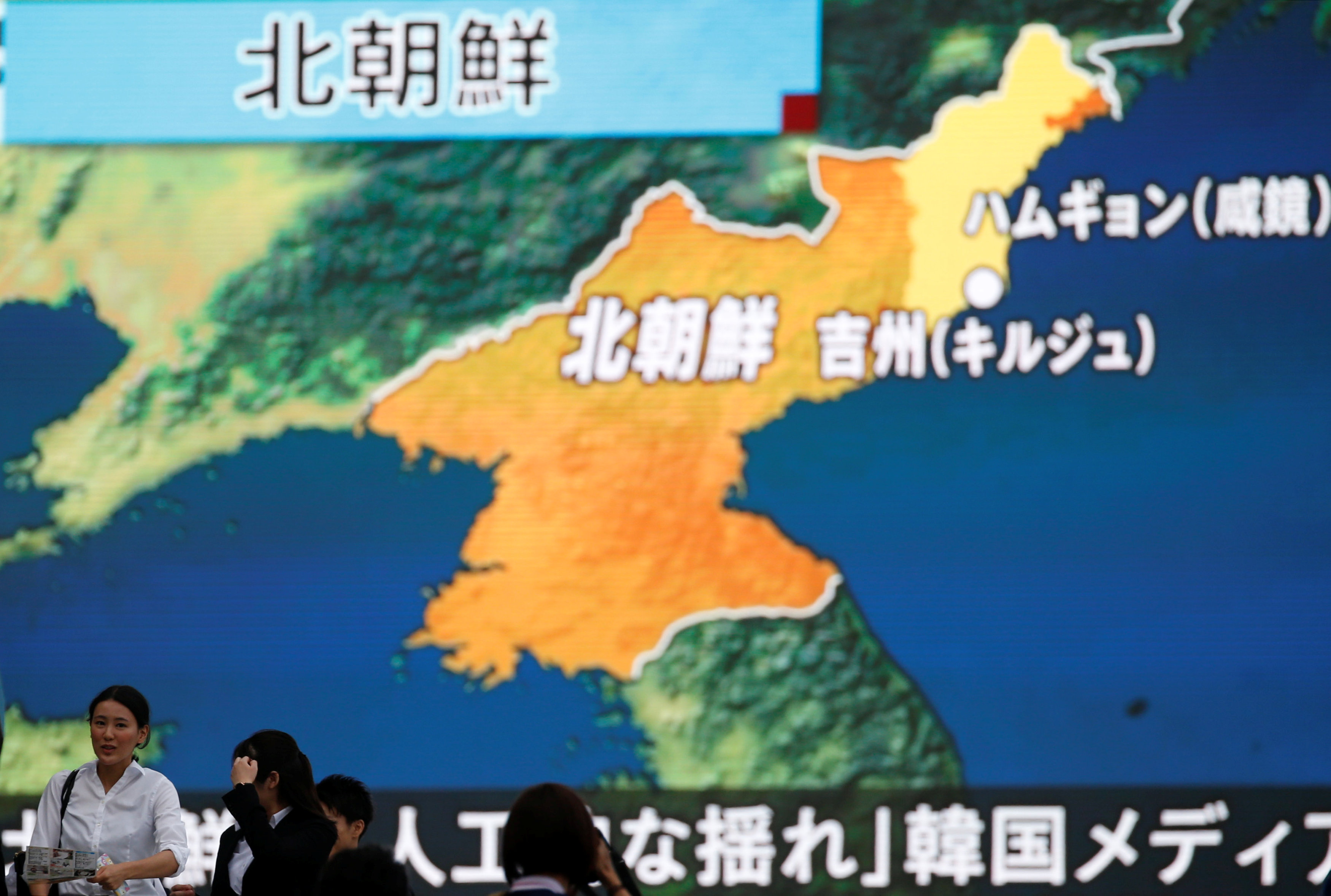By Sarah Dadouch and Jeffrey Heller
BEIRUT/JERUSALEM (Reuters) – Israel attacked a military site in Syria’s Hama province early on Thursday, the Syrian army said, and a war monitoring group said the target could be linked to chemical weapons production.
The air strike killed two soldiers and caused damage near the town of Masyaf, an army statement said. It warned of the “dangerous repercussions of this aggressive action to the security and stability of the region”.
The Syrian Observatory for Human Rights, which monitors the war, said the attack was on a facility of the Scientific Studies and Research Centre, an agency which the United States describes as Syria’s chemical weapons manufacturer.
It came the morning after U.N. investigators said the Syrian government was responsible for a sarin poison gas attack in April.
Syria’s government denies using chemical arms. In 2013 it promised to surrender its chemical weapons, which it says it has done.
The Observatory said strikes also hit a military camp next to the center that was used to store ground-to-ground rockets and where personnel of Iran and its ally, the Lebanese Hezbollah group, had been seen more than once.
An Israeli army spokeswoman declined to discuss reports of a strike in Syria.
Syria’s foreign ministry has sent letters to the U.N. Security Council protesting at Israel’s “aggression” and saying anyone who attacked Syrian military sites was supporting terrorism, Syrian state TV reported.
In an interview in Israel’s Haaretz daily last month on his retirement, former Israeli air force chief Amir Eshel said Israel had hit arms convoys of the Syrian military and its Hezbollah allies nearly 100 times in the past five years.
Israel sees red lines in the shipment to Hezbollah of anti-aircraft missiles, precision ground-to-ground missiles and chemical weapons.
ISRAELI SIGNAL?
The reported attack took place on the 10th anniversary of Israel’s destruction of a nuclear reactor in Syria.
Prime Minister Benjamin Netanyahu is due to address the U.N. General Assembly on Sept. 19, and is widely expected to voice Israel’s concern over what it sees as attempts by Iran to broaden its military foothold in Syria and threats posed by Hezbollah
Israeli officials have said that Russia, another Assad ally, and Israel maintain regular contacts to coordinate military action in Syria.
Some Israeli commentators saw the latest strike – a departure from the previous pattern of attacks on weapons convoys – as a show of Israeli dissatisfaction with the United States and Russia.
Last month, Netanyahu met Russian President Vladimir Putin, but came away without any public statement from Moscow that it would curb Iranian influence.
Hezbollah and Israel fought a brief war in 2006 in which more than 1,300 people died. Both have suggested that any new conflict between them could be on a larger scale than that one.
Hezbollah has been one of Syrian President Bashar al-Assad’s most important allies in the war and last month its leader Sayyed Hassan Nasrallah said he had recently traveled to Damascus to meet the Syrian president.
Israel is conducting military exercises in the north of the country near the border with Lebanon.
Yaakov Amidror, a retired Israeli general and former national security adviser, told reporters he assumed Thursday’s strike was linked to Nasrallah’s visit to Damascus.
“Weapons systems have been transferred from this organization (the Scientific Studies and Research Centre) into the hands of Hezbollah during the years,” he said.
HEZBOLLAH
In May, an official in the military alliance backing Assad said that Hezbollah drew a distinction between Israel striking its positions in Syria and at home in Lebanon. “If Israel strikes Hezbollah in Lebanon, definitely it will respond,” the official said.
The Syrian army statement said the Israeli strike came at 2.42 a.m. (2342 GMT) from inside Lebanese airspace. It said it had been launched in support of Islamic State.
Jets flying over Lebanon overnight broke the sound barrier and Lebanese media reported that Israeli warplanes had breached Lebanese airspace.
The Observatory reported that seven people were killed or wounded in the strike.
“The factory that was targeted in Masyaf produces the chemical weapons and barrel bombs that have killed thousands of Syrian civilians,” Amos Yadlin, a former head of Israeli military intelligence, said in a tweet.
The strike sent a message that Israel would not let Syria produce strategic weapons, would enforce its own red lines, and would not be hampered by Russian air defense systems in Syria, he added.
The U.N. Commission of Inquiry on Syria said on Wednesday a government jet dropped sarin on Khan Sheikhoun in Idlib province in April, killing more than 80 civilians, and that government forces were behind at least 27 chemical attacks.
(Reporting by Angus McDowall and Sarah Dadouch in Beirut and Jeffrey Heller, Ori Lewis, Dan Williams and Maayan Lubell in Jerusalem; writing by Angus McDowall; editing by Angus MacSwan and Andrew Roche)










